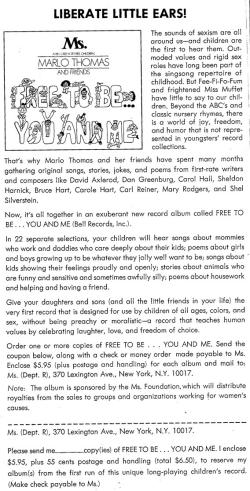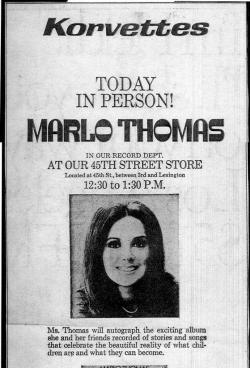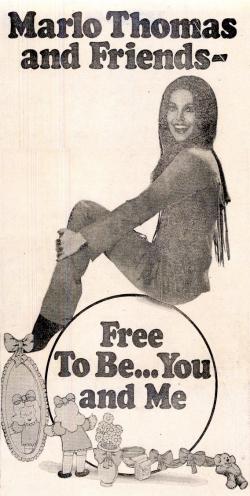Free To Be
Forty years ago, a bunch of feminists made an album. They wanted to change ... everything.
Free to be ... who? All the musicians, artists, feminists, and other figures mentioned in this series.
Want to listen to Free To Be ... You and Me? Here's a Spotify playlist.
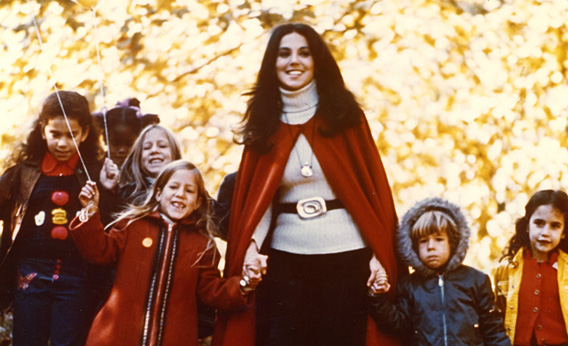
Courtesy of Marlo Thomas
Part 1: "I’ve got to make something that will obliterate this."
“Why are your toes painted like that?”
The question came from the neighbors’ kid Cam, a fourth grader friendly with my children, as a group of us parents sat in his living room drinking wine one afternoon in June. He was sprawled on the couch, sweaty and red-faced from wrestling with his little brother, and he’d noticed that each of my toes sported a different bright color of nail polish.
“I painted them!” my younger daughter exclaimed.
“It’s true, she did,” I said. “Harper really likes painting nails, so I let her do mine.”
I’ve modeled Harper’s salon skills for the past few summers. I like that she takes the task so seriously, choosing colors from a Ziploc bag of polish we keep on a high shelf in the bathroom and applying them carefully to my big, gross toenails.
“But …” Cam began, pausing to consider what his question really was. He seemed torn between viewing me as an object of pity and a key to unlocking life’s mysteries. “But don’t your friends make fun of you?”
“Oh,” I said, putting on a casual air, even though the conversation seemed unexpectedly important all of a sudden. “No, not really. When you get older, you have a different relationship with your friends than you do when you’re a kid.” Now I paused to consider. “Or maybe when you’re a grown-up, you just choose friends who understand the things you do.”
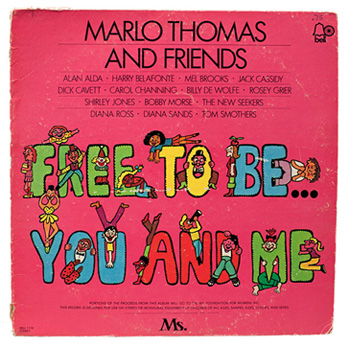
Cam, like every kid I know, has a set of firm beliefs about the clear dividing line between girls and boys. Girls and boys dress differently. They behave differently. They like different things. They manage their toes differently. They are different.
Forty years ago this November, an album appeared in stores that wanted to change all that. Free To Be … You and Me aimed to teach kids that boys and girls aren’t different at all: that every child, no matter which gender, can wear whatever, like whatever, behave however it wants. That every child can be free just to be.
From the album’s opening sounds—the jaunty strumming of a banjo on the title track—Free To Be posited a world in which every boy “grows to be his own man,” and “every girl grows to be her own woman.” The land of Free To Be was a place where girls could grow up to be mommies and doctors, and they didn’t have to get married if they didn’t want to. It was a place where boys could cry or play with dolls without fear of scorn. It was a place where boys and girls could be friends, no matter what they looked like or acted like—unless the girl was a prissy princess, in which case she would be eaten by a tiger.
The brainchild of actress Marlo Thomas, Free To Be … You and Me was also the product of Thomas’ life lived in showbiz. Calling in favors from people she’d known since childhood—her father was the comedian Danny Thomas—and the clout she’d accrued as the star and producer of the hit sitcom That Girl, Thomas assembled a murderer’s row of early 1970s musical and comedy talent. Diana Ross, Harry Belafonte, and the New Seekers sang. Alan Alda, Tom Smothers, Mel Brooks, and Carol Channing performed. Shel Silverstein, Carl Reiner, and Mary Rodgers wrote songs and stories. But all those stars paled in comparison to Thomas herself, who sang and acted on many of the record’s tracks—and assembled its cast of characters, oversaw the album’s tone and direction, and promoted the hell out of it upon its release.
Even with all that star power, the project was, at heart, founded on some serious feminist ideology. Free To Be was shaped by the philosophies of Thomas’ friend Gloria Steinem and the staff of her new magazine, Ms.—particularly Letty Cottin Pogrebin, who was already using the pages of that groundbreaking publication to advocate for a new style of gender-neutral parenting.
Forty years after its 1972 release, Free To Be has sold hundreds of thousands of copies and for a generation of kids—my generation—was a cultural and social touchstone, played not just at home, but at countless schools where its anti-sexist storytelling was eagerly adopted by progressive teachers and administrators. A 1974 book based on the record became a best-seller; its accompanying TV special got better ratings than Gunsmoke and won an Emmy and a Peabody.
* * *
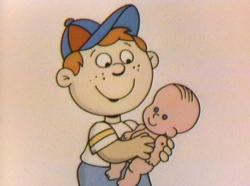
Courtesy Free To Be Foundation.
I was born in 1974. The first records I remember playing on the hi-fi in our family room were the John Denver and the Muppets Christmas album, Jackson Browne’s Running on Empty, and a 45 of “Pac-Man Fever” by Buckner & Garcia. But the first record that I remember being mine was a hand-me-down copy of Free To Be … You and Me. I listened to it so many times that I still know what it sounds like when the needle drops on the beginning of Side 1 and that banjo starts playing. I know that after “It’s All Right To Cry” I have to turn the record over. I can still picture the colorful characters on the album’s cover: the ballerina perched in the crook of the Y, the weird guy with the moustache and bowler hat sticking his head through the O.
And I remember the odd feeling of dissociation, even then, as I tried to relate the world of Free To Be with the world I actually lived in—1981 suburban Whitefish Bay, Wis. Because in my elementary school, it wasn’t, actually, all right to cry. Not if you were a boy. And certainly no boy in my second-grade class would admit to having a doll the way William does in “William’s Doll.”
In a lot of ways my family today represents the ideals Free To Be was fighting for: My wife and I both work. She earns more than I do. We make a real effort to give our daughters pride in their own small womanhood. Like many children in our affluent suburb, ours have a preternatural self-confidence—they’ve never even considered that they can’t be anything they want to be. They assume they’ll be something so amazing they haven’t even thought of it yet.
And yet: My older daughter insists that boys make fun of girls because America’s never had a girl president. Both the 7-year-old and the 5-year-old still face a world in which parents, including their mom and dad, struggle every day to balance work and family and where there remains a significant gender wage gap in many fields. Good grief, the other night I admitted to Gloria Steinem during a phone interview that my younger daughter had just insisted upon going to bed wearing a Disney-brand princess dress. (Steinem was not amused but not unkind.) Meanwhile, the boys in our neighborhood may deem the kid on their hockey team who wraps his stick in hot pink tape “cool.” But they’re also obviously thrown by my painted toes.
So has the revolution that Free To Be … You and Me helped herald been won, because our kids are free to be successful and stressed out, just like us? Has it been lost, because a generation of parents tried to get their daughters to play with trucks and their sons to play with dolls—and failed?
And could an album like Free To Be ever be made today? Leaving aside the obvious problem that “albums” basically no longer exist, would a bunch of 2012-era celebrities—I’m talking Jay-Z and Beyoncé caliber stars—donate their talents to a project championing feminism, fighting gender essentialism, and telling boys that it’s all right to cry?
For that matter, how did it ever get made in 1972?
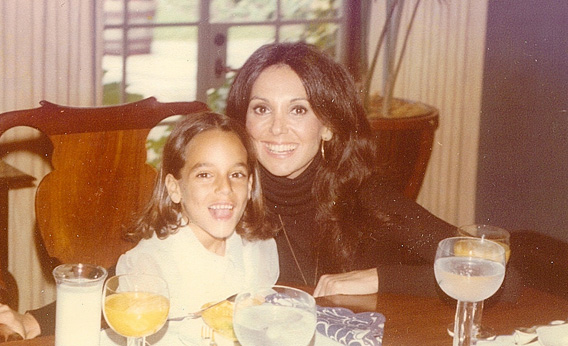
Courtesy Marlo Thomas.
* * *
When Dionne Gordon was 3, her aunt from New York came to visit her in Los Angeles. Auntie Marlo was a natural performer and loved to read to her young niece, but she was disappointed in the messages being delivered by the books in Dionne’s bedroom. “I can’t believe you’re reading her the same books we grew up with,” Marlo complained to Dionne’s mother after Dionne went to sleep. “Didn’t it take us half our lives to get over these stories?”
“These stories” were, as Thomas puts it, ones full of “princesses, nurses, moms, stewardesses, and demure goody-goodies.” Where were the books that would make Dionne proud to be a young woman and inspire her to greater heights?
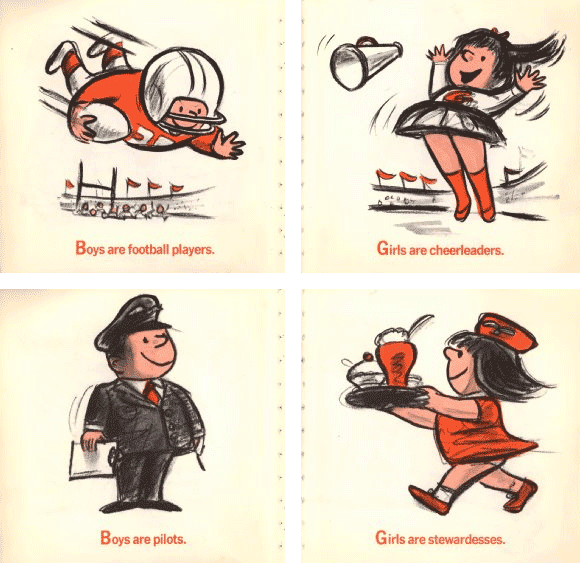
So Auntie Marlo drove to Martindale’s bookshop in Beverly Hills and searched the shelves for children’s books with a take on gender a little more suited to the progressive era in which she lived. It was 1971, for goodness sakes. Instead she found a book called I’m Glad I’m a Boy! I’m Glad I’m a Girl! In charming cartoon panels, little boys and girls gave thanks for what made them who they were:
The book, by New Yorker cartoonist Whitney Darrow, Jr., was likely intended as satire, but the satire was so dry it was entirely lost on Auntie Marlo. My god, she thought. This is what she’s going to be reading. This is all there is for her to read. What am I going to do? Then she thought: I’ve got to make something that will obliterate this.
Marlo Thomas, then 34, was taking acting classes with Lee Strasberg in New York and planning her next move. Her TV show, That Girl, had run its course, finishing after five seasons. Thomas’s character, aspiring actress and single girl Anne Marie, had gotten engaged in the final year of the show, but Thomas refused to end the series with a wedding—Thomas was single and proud, and she wanted her character to be as well. She was dating playwright Herb Gardner—she always referred to him in conversation as “Herb-Gardner-my-boyfriend,” spoken as if it was just one word—but was uninterested in getting married.
Thomas’ fruitless Martindale’s shopping trip led her to the idea that her next project ought to be a collection of stories for children that avoided sexual stereotypes and promoted gender equality. She could solicit the stories and record herself reading them. It would be just like the records she and her sister had listened to in their rooms as little girls, but liberated, smarter, modern. She just had to find the stories.
Back in New York, a mutual friend put her in touch with Ursula Nordstrom, the doyenne of children’s publishing who’d edited E.B. White, Maurice Sendak, and Margaret Wise Brown at Harper & Row. Nordstrom sent Thomas out on meetings with a handful of writers. “I told them what I was looking for," Thomas remembers: "stories that showed boys and girls sharing the world and cooperating together and changing who our role models could be. Breaking down the myths of what girls and boys could do, changing the whole idea of who they could be.” In response, Thomas says, “It was kind of, ‘Roses are red, violets are blue, you can be this, you can do … ’ I thought, This is no good. Kids are too sophisticated; they have rock concerts in their living rooms on television. They weren’t hot enough. They weren’t sassy enough.”
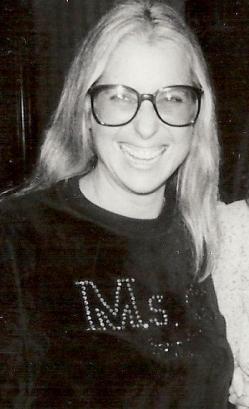
Courtesy Marlo Thomas.
How to proceed? In early 1972, Thomas met the two women who would make Free To Be a reality. Letty Cottin Pogrebin, once a celebrated book publicist and now an editor at the brand-new magazine Ms., defined the political and social parameters of the project; producer Carole Hart defined the album’s aesthetic. Together the three women spent the spring, summer, and fall of 1972 working furiously to get the record out in time for the holiday season. The impromptu masterpiece they created was the product of Pogrebin’s commitment to feminism, Hart’s organizational and production skills, and Thomas’ unstoppable ambition. Without any one of them, the project would likely have never happened at all.
“I introduced Marlo to Letty,” Gloria Steinem says. “That was like introducing Chase to Sanborn. That’s a very old reference, there must be some other reference.” Thomas and Pogrebin met for lunch at the Ginger Man restaurant on Manhattan's Upper West Side. Ms. magazine’s first issue had just come out, featuring Pogrebin’s essay “Down With Sexist Upbringing.” Inspired by her meeting with Thomas, Pogrebin went searching for stories hot and sassy enough for the TV star. It was a role to which she was well-suited: The only woman on the Ms. editorial team with school-aged children, Pogrebin had taken on the de facto position of family expert.
One persistent myth about feminism, then as now, was that it was anti-mother. But Pogrebin and the other editors at Ms. realized early that in fact mothers were the perfect subject, and target, for the magazine—and, more broadly, for the feminist movement. “We were pilloried for being anti-mother,” Pogrebin remembers. “Or for ridiculing the role of mothering or for not valuing it. Which was complete bullshit. We were the only people who were looking at the rights of mothers and the strain and stresses of being an at-home mom and demanding more respect for women who choose that role.” Indeed, in the introduction to their forthcoming anthology When We Were Free To Be, historians Lori Rotskoff and Laura L. Lovett point out that the battle to make child rearing more egalitarian, including through the pages of Ms., “was as germane to second-wave feminism as the crusade for reproductive freedom, the passage of anti-discrimination laws, or the struggle for equity in the workplace.”
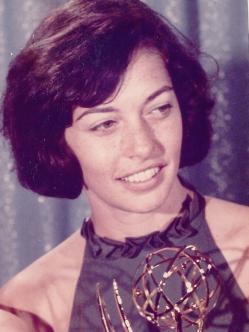
Courtesy Marlo Thomas.
And Pogrebin didn’t just aim the magazine at mothers; she wanted it to speak directly to kids. “You had to be under a rock to not realize that teaching had to start way back,” she says. “You want to start when you can influence them young.” Around the time she met with Thomas, Pogrebin was already developing “Stories for Free Children,” a monthly pull-out featuring a nonsexist children’s story, most of them written specifically for the magazine because the children’s book market was so barren.
Meanwhile, Thomas told her agent at William Morris that her nascent children’s album needed a producer, and the producer needed to be a woman. In the music department, a junior agent named Scott Shukat recommended Carole Hart, a 28-year-old who’d just won an Emmy for co-writing the inaugural season of Sesame Street.
Hart visited Thomas at her apartment on East 71st, where Thomas showed her the material she’d collected so far: a handful of books from Ursula Nordstrom’s authors and a few stories that Pogrebin had plucked from her daughters’ bookshelves. Hart, like Thomas and Pogrebin, was unimpressed. “I have always had a feeling,” Hart says, “that children are really smart and that we shouldn’t ever underestimate their taste or their intelligence. And so I said to Marlo: ‘I don’t think these materials are ambitious enough.’ ”
Hart laughs. “That was like lighting a firecracker under Marlo. Me? Not ambitious enough?! I said, ‘I think we should just create the materials ourselves.’” Pogrebin agreed: “It’s not in the books. We had better create a genre that doesn’t exist.”
But how? How could they pull together original stories, saleable stars, and ideological rigor to make an album that would teach children a revolutionary way of thinking without them even knowing it? And how could they get parents to buy it?
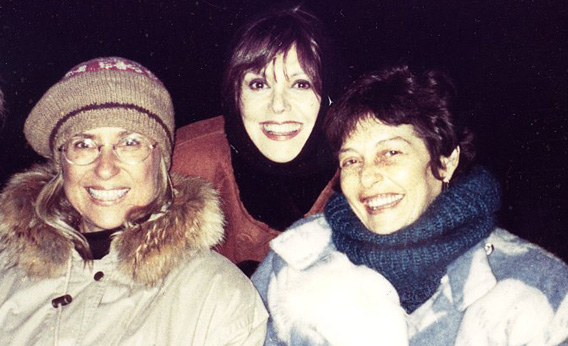
Courtesy Carole Hart.
Letty Cottin Pogrebin knew feminism. Carole Hart knew songwriters. And Marlo Thomas knew everybody.
Part 2: Recording Free To Be
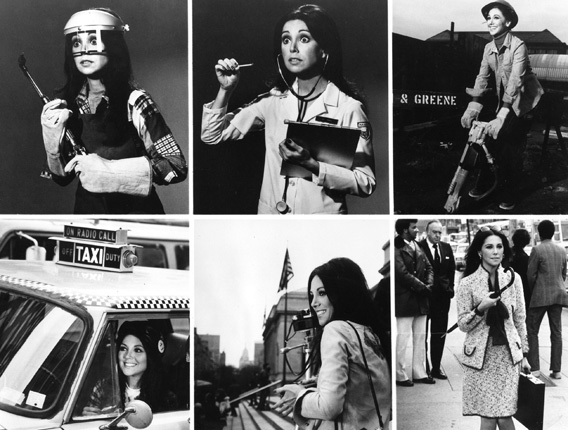
Courtesy Marlo Thomas.
And lo, the word went out to New York’s songwriters and children’s book authors and frustrated Broadway bards and William Morris clients in the spring of 1972: Marlo Thomas, the star of That Girl, is putting together a children’s album, and she needs material. Sexist pigs need not apply.
To get things rolling, Thomas held a series of late-night brainstorming sessions that spring at her East 71st Street apartment: wine, pizza, and consciousness-raising. Carole Hart, the young producer Thomas had chosen for the album, and her husband, Bruce, a lyricist, came. So did Letty Cottin Pogrebin, the editor at the brand-new Ms. magazine who was serving as the project’s “feminist Jiminy Cricket,” making sure the album stuck to core principles of the movement. Mary Rodgers, the songwriter and children’s book author (and daughter of composer Richard Rodgers), was there, sent by her legendary editor at Harper & Row, Ursula Nordstrom. From Thomas’ circle of friends there was boyfriend Herb Gardner, Shel Silverstein, the screenwriter and playwright Peter Stone, and Gardner’s good pal Paddy Chayefsky. Thomas posed a simple question to them all: What lessons or stories do you feel were missing from your childhood?
From those conversations, many of the album’s themes emerged. Thomas remembers Gardner saying, “I wish that somebody had told me that it was all right to cry without being called a sissy.” Thomas herself wished for a story where the princess wasn’t blond and she didn’t marry a prince at the end.
Together, Thomas and Pogrebin and the rest of the informal creative team honed in on four overarching ideas that the album should convey. As Thomas later described them to the New York Times:
- “The celebration of the self, the idea that a child should feel, ‘It’s terrific to be me; I’m unique.’ ”
- “What parents can be.”
- “Children should be themselves in what they do and what they feel.”
- “Boys and girls should play together.”
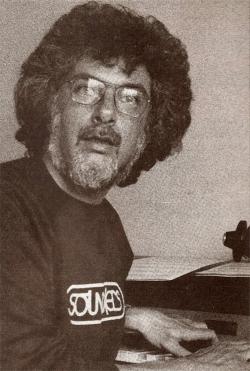
Courtesy Stephen Lawrence.
“I wanted the Free To Be project to be a cushion underneath children,” Thomas says now. “Something that would be a springboard, to say, ‘Yes, you can. You can do it.’”
So now they had a list of ideas. All they had to do was write an entire album and hire a cast of performers famous enough to sell it. Not only that, but they had to get the backing of a record company. Thomas’ agent at William Morris offered the project to several without success. Eventually the album ended up at Bell Records, a brand-new label under the Columbia umbrella. Bell paid an advance of $15,000 to the Ms. Foundation for Women, a nonprofit formed by Thomas and Gloria Steinem as a repository for profits from the record. Not that they thought there would be any; a Bell exec told Thomas they expected the album to sell no more than 15,000 copies. That was still better than the response Carole Hart remembers from a different music executive: “What would I want with a record produced by a bunch of dykes?”
Carole asked her husband, Bruce, to write a theme song for the whole record to give the project a name. “Bruce came up with the phrase Free To Be You and Me Jamboree,” Carole says. “You can’t stop a lyricist from liking those triple rhymes.” But Carole convinced Bruce, who died in 2006, to drop the “Jamboree” and presented the title to Thomas, who thought it sounded bland. Bruce and his frequent collaborator Stephen Lawrence wrote a song to go with the title anyway: an folk-pop anthem inspired by “This Land Is Your Land.” They just had to sell Thomas on it.
“I hadn’t worked with Marlo, and she was very strong and had very specific tastes, and I wanted to please her,” Lawrence says. “And I wanted to get it out of the way so I didn’t have to think about it because the stakes were so high.”
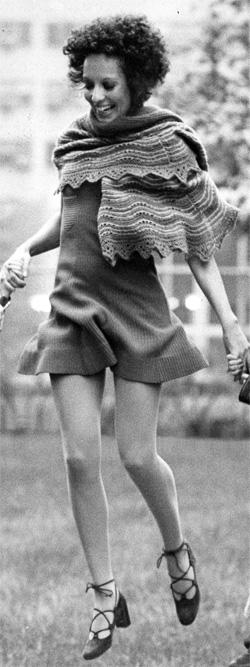
Photo by Richard Blinkoff.
Thomas and Carole Hart and Pogrebin went to Lawrence’s squalid bachelor pad on West 56th to hear the writers perform the song on his piano. “I didn’t like to wash dishes,” Lawrence recalls, “so to keep the roaches at bay, I would fill the sink with soapy water and put dirty dishes in there, sometimes for a long time.” Thomas asked if Lawrence could get her a glass of water, and he replied, “I don’t know.” But the jaunty song was a hit, and the album had a title.
Thomas reached out to other friends. She and Hart asked Shel Silverstein for something funny, edgy, not at all sentimental. He turned in a tart song, “Helping,” and a scathing poem, “Ladies First,” which Mary Rodgers adapted for performance. Peter Stone asked his friend Carl Reiner to write a variation on his popular “2000 Year Old Man” sketches, a two-hander in which two babies speculate on their own genders. Also in their circle was the writer Dan Greenburg; he was about to leave for Martha’s Vineyard to shoot his movie I Could Never Have Sex With Any Man Who Has so Little Regard For My Husband, but Thomas and Hart still asked him to contribute. He wrote two short, funny poems by hand one afternoon while on break from shooting and sent them in.
Other assignments came about through more traditional industry channels. Carol Hall got a phone call from her agent, Scott Shukat. The Texas-born singer-songwriter’s debut album had not sold particularly well, and she was still several years away from writing The Best Little Whorehouse in Texas, so she threw herself into her first Free To Be gig: Write a song about how mommies and daddies are people, too. She’d been tipped that Thomas was going to sing some of the songs on the album and that she was nervous enough about her voice to have hired a vocal coach. Hall wrote a simple, hummable melody with lines she thought might get Thomas’ attention, as when she noted that some daddies are “funny joke tellers”—like Thomas’ own father, comedian Danny Thomas.
Thomas and Hart were on the hunt for a musical director for the album—someone who could arrange, conduct, and control the way the songs sounded. As part of his audition for the role, Lawrence, later an Emmy-winning composer for Sesame Street, met Thomas’ voice coach, Colin Romoff. “He had to bless it every time she opened her mouth in song,” Lawrence remembers. “She relied on him very heavily.” Lawrence and Romoff discussed Thomas’ range and experience as a singer (limited and limited), and began preparing her for the songs she would perform on the album.
As summer arrived, so did the songs and sketches: on paper, on audiotape, performed in studios and living rooms for the three women. Abby Pogrebin remembers her mom, Letty, bringing demo tapes to their summer rental on Fire Island, N.Y., to test them out on the kids. “I knew we had something amazing,” Letty says, “because within three hearings they were singing along.”
Mary Rodgers recruited her neighbor and friend, Fiddler on the Roof lyricist Sheldon Harnick, to collaborate with her on “William’s Doll,” based on the one book suggested by children’s publisher Ursula Nordstrom that Thomas liked. (It was written by Charlotte Zolotow, Nordstrom’s protégée.) Harnick, on the advice of all the feminists he was meeting through Free To Be, read Sisterhood Is Powerful, and one chapter on the politics of cleaning inspired him to write a poem about how no one likes housework; Thomas added it to the roster. (A decision the team would later regret.) Hart’s literary agent suggested she contact children’s author Betty Miles; Hart assigned Miles an adaptation of the Greek myth of Atalanta, a princess racing against young Melanion, who desires her hand in marriage. Miles rewrote the tale’s original ending—in which Aphrodite helps Melanion win the race and get the girl—to reflect a more liberated time.
For Carol Hall's second assignment, “It’s All Right To Cry,” she went to the Little Red Schoolhouse in downtown Manhattan and quizzed her son’s classmates on their feelings about crying. “Crying gets the sad out of you,” one child suggested. “It’s like raindrops from your eyes,” said another. Chuckles Hall today: “Poor little darlings, their names are not on the copyright. Thank you, children!” Once again hoping Thomas might sing the song, Hall tailored it to her. “How am I going to say this so that in print it sounds graceful?” Hall muses now. “Marlo is a wonderful, wonderful performer, but she is such a perfectionist that I knew that singing was not something she was accustomed to doing that much. So because I thought that Marlo might sing it, I wanted to aim it to her, melodically, so I made it very, very simple.”
The song was accepted, and then, Hall says, “I was about to pop to get a third thing on the record, because nobody else had three.” (She was getting updates from her agent, Shukat.) She composed a song for Kris Kristofferson, who’d written the liner notes for her first album and sent it to him without telling anyone. “Oooh, Carole Hart was mad at me because I sent it to Kris directly.” Kristofferson turned the song down; he would later appear on the Free To Be TV special. And Hall did eventually land that third song, about friendship between boys and girls, “Glad to Have a Friend Like You,” which wound up closing the album.
Friendships or no, this was still business. The project’s attorney, Robert Levine, husband of Ms. managing editor Suzanne Braun Levine, drew up deals for all the participants: Writers assigned their copyright to the Ms. Foundation for a period of five years, after which they could request reversion. The foundation would pay mechanical royalties—royalties due to composers—from dollar one and record royalties to performers after Bell Records recouped its advance. “We all felt the contributors should be paid for what they did,” Levine says. “I mean, Marlo never takes any money for anything, and a great many of the performers waived their financial interests for the benefit of the foundation. But we set up an accounting system to be sure that people were compensated.” And people were: Dan Greenburg marvels today that while the movie he went off to film in Martha’s Vineyard—the one he thought would make his career—was a total flop, the two poems he dashed off one afternoon on set have resulted in steady royalty checks every year since.
* * *
Pretty much everyone I spoke to credits Thomas with the project’s ultimate creative and financial success. She was a taskmaster, but an enthusiastic one. Even 40 years later, I kept hearing the phrase “force of nature” spoken both admiringly and anxiously about her. Pogrebin, asked what Thomas was like at the time, gives a straightforward answer:
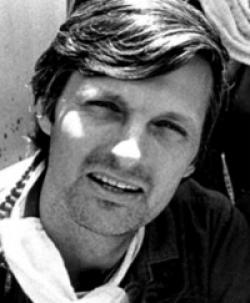
CBS Television.
She is very strong, very opinionated, and tireless. People knew exactly what she wanted, and they gave it to her, and they knew when they didn’t. She was very direct. She was a real executive. She was comfortable in the authority role. And she had the last word on everything. She had a vision. You didn’t have to mess around. Her enthusiasm is infectious. She’s funny. I remember her with no makeup and exhausted after some of the recording sessions. She looked about as washed out as a movie star could possibly look, but she had this luminous look in her eye like, We got it. We did it. It’s right, it’s perfect, it’s great. And that’s what you want to see in a creative person.
In early summer, that creative energy was put to use assembling the cast of actors and singers who would perform Free To Be. Thomas, the daughter of a successful comedian and satellite Rat Packer, had grown up in Hollywood, and in 1972 she reached out to every famous person she knew, it seemed. And pretty much everyone said yes. “Marlo … is very persuasive,” laughs Levine.(Carol Burnett, who was originally meant to perform the poem “Housework,” had a scheduling conflict. The only person anyone can remember flat turning the project down was Alan Arkin, who was, according to Mary Rodgers, “very grumpy and totally uninterested.”)
One of the first calls Thomas made was to her friend Alan Alda, whom she’d met on the set of the 1970 drama Jenny. Alda agreed to perform on the album and also to direct the storytelling portions—the poems and short radio plays that made up half the record. Alda, Thomas, and Hart decided that those sketches, wherever possible, should use sound effects and Story Theatre-style acting techniques to make them come alive. Thomas still remembers running in place while recording the race sequence of “Atalanta.”
The sketches were recorded at the grand MediaSound studio on West 57th Street over the course of a few days. Billy De Wolfe, Thomas’s co-star on That Girl, lent his distinctive voice to several roles on the record, including the dandyish principal who plays the flute for Dudley Pippin. (Dudley Pippin himself was voiced by “Bobby Morse,” better known now as cranky senior partner Bertram Cooper on Mad Men.) Some of the sessions were quite impromptu: Dick Cavett remembers getting a call from Thomas in the morning—“I had a show to tape that day, and I thought, well, God, I can’t really do it, but I like her, and she does good stuff, and also I was very familiar with her face because on my daytime show the promo for That Girl ran at least 10 times during each show”—and walking the few blocks from his office to MediaSound to record that afternoon.
Mel Brooks’ session was more eventful. Thomas had written to him that the album “would benefit the Ms. Foundation,” and when he came in the morning of his recording, he told her that he thought the material Reiner and Stone had written was funny but that he didn’t know what it had to do with multiple sclerosis. Once set straight about the MS in question, Brooks joined Thomas in the recording booth, where they would both play babies for the album’s first sketch, “Boy Meets Girl.”
“When I directed,” Alda recalls, “I would be meticulous and relentless. I would do a lot of takes. But Mel is not a guy who’s used to doing a lot of takes. He’s not used to taking direction from anybody—you know, he gives direction.” Alda didn’t love the first few takes of “Boy Meets Girl”; in the end it took, Alda remembers, 10 or 15 tries, with Brooks improvising madly all along the way. Rodgers was there that day to record “Ladies First,” and she still remembers standing in the control room laughing harder with each take. “Mel was generous,” Alda allows, “and he let me egg him on.”
Lawrence, the project’s musical director, assembled musicians and began recording the backing tracks at Phil Ramone’s A&R Recordings, on the corner of 48th Street and Sixth Avenue. He wasn’t much of a conductor, he admits. (But: “I never ever turned down a job because I didn’t know how to do it.”) While recording the tricky “William’s Doll” with its multiple tempo changes, Lawrence saw Sheldon Harnick, the song’s lyricist, standing in the control room and invited him in. “Just stand next to me,” Lawrence said, “and tell me how you want it as I’m conducting it.”
To rope in other singers, Thomas, Lawrence, and Hart went on the road. Former NFL star Rosey Grier was performing nightly at the Playboy Club in Chicago, so off to Chicago the trio went to record Grier singing “It’s All Right To Cry.” Grier asked Lawrence to give the song a little bit more of a beat, so he added drums to the acoustic guitar in the mix; Thomas wanted Grier to speak-sing the lyrics, but Grier wanted to croon. He prided himself on his sensitive nature. (The next year, he would release a book called Rosey Grier’s Needlepoint for Men.) Even today, he gets upset when discussing the song. “What right does someone have to tell a little baby boy not to cry because he’s a grown man?” he asks me. “The hurt is just as bad, the pain is just as bad, there’s no feeling different than the girls. So why should he have to hold it in and be sniffing and trying not to cry? Because they’re going to make fun of him? Forget all that, man. If you want to cry, cry.” During the recording, he ad-libbed his final line: “It’s all right to cry, little boy. I know some big boys who cry, too.” “Oh,” Hart remembers, “after he finished it I just jumped up and gave him a huge hug and said, ‘Thank you! Thank you!’ ”
Diana Ross came down to the city from her house in Connecticut and nailed “When We Grow Up” in one take. (For the 1974 TV special, the song would be rerecorded by Roberta Flack and a 15-year-old Michael Jackson. More than one person remarked to me how ghoulish and sad it was to see a dark-skinned, fresh-faced Jackson sing, “We don’t have to change at all.”)
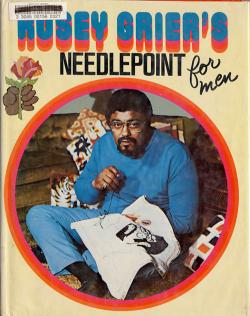
Courtesy of Kitschy Living.
The team flew to Los Angeles to record Tom Smothers for 48 seconds. Lawrence carried the instrumental recordings on big reel-to-reel tapes in cardboard boxes on his lap on the way out, then carried the vocal tapes in cardboard boxes on his lap on the way back. In Las Vegas, they recorded Harry Belafonte singing his part on “Parents Are People.” Thomas had already recorded her side of the song at A&R in a key she felt comfortable in, but “When it was all over,” Hart remembers, “we played it back to him, and he didn’t like the way he sounded because it was in the wrong key. And he said, ‘You can’t use it.’ ” Thomas tried to convince Belafonte to change his mind; Hart followed up. By then it was days before the final mixes were due. “He wouldn’t budge,” Hart says. “I was at the end of my wits. And I just started sobbing. And that got to him!” She laughs. “That was a feminine trick, I guess. I didn’t mean it as a trick. I was just so frustrated.” Belafonte relented, and the track went on the record.
Mastering and sequencing went right up until the very last day—Hart recalls pulling an all-nighter before the listening party at Ms. headquarters on 41st Street and Lexington Avenue the next day. The evening of the party, Hart and her husband, Bruce, brought the tapes to the magazine’s office. Gloria Steinem was there, and Letty Cottin Pogrebin, and the rest of the Ms. editorial team. Thomas and Alda and a number of the singers and writers were there. Carol Hall came and sat like “a mouse in the corner”; no one knew who she was since she’d turned in every song through her agent. “Listening to the record, though, with all these people whom I didn’t know all around, and I was thinking, ‘I wrote three of those songs.’ So it was kind of like a very nice secret I had.”
Carole Hart was too anxious to stay in the room while the master recording played. She sat in the hall with the door open and listened to the big laughs at Thomas and Mel Brooks as babies, the applause at the end of some of the songs, the sounds of the nine months she’d spent working day and night on a project that was about to head out into the world. “I calmed down a little bit,” she recalls, “but I still didn’t go in.” When the record ended, Hart exhaled and smiled. The first two women to walk out the door chattered as they strode past Hart. “Well you know,” one said, “it had a very heterosexual bias.”
Part 3: Has the Free To Be Revolution Been Won?
The November 1972 issue of Ms.—just the magazine’s fifth in its monthly format—featured a colorful pull-out section introducing Free To Be … You and Me: the first record “in the history of children’s entertainment to contain no sex or race stereotypes.” That month, the album’s musical director, Stephen Lawrence, took it upon himself to call record stores around New York, a one-man PR machine making sure everyone had copies for sale. “I thought it needed to have some sort of buzz,” he says now. “So I was single-handedly trying to create some buzz for it. I didn’t know it was going to take off on its own.”
On Christmas Eve, the New York Times ran a gentle profile of Marlo Thomas and a fascinating review of the album that goes a long way toward upending any concept I had of what the New York Times represented in 1972. Written by Deborah Jowitt, the review is mostly positive. The album “has obviously been put together with thought, integrity and skill,” Jowitt wrote. “It’s diverting, and I applaud its message.” She had two quibbles, though. She thought that the album might have actually de-emphasized gender too much, to the point that “a child might—I’m serious—wonder why we have two sexes at all.” After quoting the declaration in “Parents Are People” that the only things mommies can’t be are “daddies … or grandfathers,” Jowitt responded, “Why the hell not, one wonders.” (!!!)
Jowitt also took issue with Carol Channing’s “Housework,” complaining that “the skit, unintentionally, I’m sure, demeans those who accept the clean-up chores without fuss, and makes those who take pleasure in such chores sound like real suckers.” Jowitt’s critique was not the last one that “Housework” would receive. In an essay in the upcoming book When We Were Free To Be, historian Lori Rotskoff reads letters that Ms. received in response to Free To Be that are now catalogued in the Schlesinger Library on the History of Women in America at Harvard’s Radcliffe Institute. One listener related hearing the track while the family’s paid housekeeper cleaned nearby. “It seemed too demeaning and insensitive to this woman, who does derive a sense of satisfaction and accomplishment from her work,” the listener wrote. Another suggested that children should be taught that housework, “like brushing their teeth, needn’t be glorified or expanded to fill the whole space of their lives,” but by the same token “neither should it be negatively charged.”
“There was a constituency of women,” Gloria Steinem says today, “that felt that if you wanted to be anything other than, or in addition to, a homemaker, you were somehow saying it wasn’t good to be a homemaker. So to say ‘I hate housework’—we got negative letters about that.” Carole Hart, the album’s producer, is more blunt. “We didn’t think it through,” she says. “I think we missed the beat there. Had we been more thoughtful we probably wouldn’t have done it in the first place.” (It was left off the TV special.)
Criticism came from the other direction, too. Thomas held on to a review from the feminist newspaper Off Our Backs, which chided Free To Be for its focus on the nuclear family and hetero relationships. “The message is so upbeat and catchy and some of the messages so appealing,” Fran Pollner wrote, “that the adult feminist listener may miss the first time around the basic idea of this one-hour album: that little boys and little girls should get together at a young age to ensure a solid and satisfying future marriage and family life.”
“I think it was very hard in the 1970s to ever make any comment that was viewed as radical enough,” laughs Laura Lovett, co-editor with Rotskoff of When We Were Free To Be. “People were holding one another to really hard and clear goals.”
But of course part of the point of Free To Be was making radical feminist beliefs palatable to a broad audience that might otherwise reject them. “It was second-wave feminism that went mainstream,” Rotskoff says. “It was packed with telegenic celebrities. It was performed by famous people. And the messages were both revolutionary and accessible enough for a mainstream audience.”
“People say, ‘I was raised on Free To Be,’” says Letty Cottin Pogrebin, a founding editor at Ms. and a driving force behind Free To Be … You and Me. “Which I find quite remarkable. You wouldn’t say ‘I was raised on Alice in Wonderland.’ There’s something about Free To Be: People feel it was a turning point, it changed their lives, it infused their general sensibilities.”

“By the time I was a conscious human being, I knew all the rhythms of those songs,” says the director Jason Reitman, who was born in 1977 and who used “When We Grow Up” in the closing credits of his scabrous comedy Young Adult. “I was part of that generation that was so inundated with equality rhetoric. Free To Be was the sneakiest, because it never felt like it was educating you. It was making you laugh, giving you great dance tunes, and at the end you’re like, Of course we’re equal, what else we would be?” He launches into a quick impression of Carol Channing in “Housework,” nailing it word for word. “I had to relearn later on that this album was necessary to battle a pervasive inequality.”
Trey McIntyre was a Free To Be kid, too. The choreographer’s 6-foot-6-inch frame seems to fold into itself like origami as he settles into a flimsy chair, crosses his legs, and opens a water bottle. We’re sitting in a clearing at Jacob’s Pillow Dance Festival in the Berkshires. It’s a bright summer day, and we’re here because McIntyre’s company, the Trey McIntyre Project, is premiering a new piece based on Free To Be. McIntyre is nervous; tonight Thomas, Alan Alda, and Pogrebin are coming to see the show.
Based in Boise, Idaho, TMP is a well-respected touring company whose charismatic, handsome leader has become something of a rock star in his adopted hometown. It was on the company’s last visit to Jacob’s Pillow, two years ago, that the idea for “Ladies and Gentle Men” was hatched. The Aldas and the Pogrebins, who’ve remained friends since Alan and Letty met in the MediaSound studio in 1972, were visiting the festival together and came backstage to meet McIntyre after the performance.
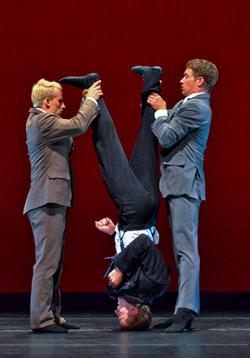
Photo by Taylor Crichton. Courtesy Jacob's Pillow Dance Festival.
“I was so star-struck and dizzy-headed,” McIntyre says. He told them he’s always wanted to choreograph a piece to music from the album, and the two gave their blessing. A year later, Thomas watched McIntyre’s company perform in a rainstorm at Lincoln Center Out of Doors and officially approved the project. McIntyre’s piece uses music from the original album and TV special but also new versions of Free To Be songs by tUnE-yArDs' Merrill Garbus, of Montreal, and Kimya Dawson. (Dawson sings the cover of "Glad to Have a Friend Like You" in the clip from the Jacob's Pillow production above.)
“My earliest memory,” McIntyre says, “was Free To Be coming on TV. I was born in ’69, so I must’ve been 4 or 5. My dad was a principal at a school, and he had access to technology, and he brought home a reel-to-reel video recorder. I remember we had one of those big old battleship TVs, bigger than a buffet, and he pointed the camera at the TV and recorded Free To Be. We had to be really quiet because he was recording the audio off the TV.” He laughs, marveling at the memory. “It was a part of our family! We invented the VCR just so we could watch it again.”
McIntyre’s parents divorced when he was young; his mother was a committed feminist, and his more traditional father felt left behind, he says, by the changes happening even in Wichita, Kan. Free To Be became the soundtrack to McIntyre’s childhood, and “William’s Doll” had particular meaning. “That song was so revolutionary,” he says. “It was such a dissonant message from most of what was out there. Hearing these famous people talk about this—There are other people in the world who feel that way.”
“You don’t find that song a little weird?” I ask. “How the reasons why it’s OK for William to have a doll end up being”—I search for a word that sounds less ridiculous but cannot find one—“heteronormative? Like, it’s OK to have a doll because at one point he might be a daddy, not just because sissyness is potentially positive or a way of being.”
“I hear you,” McIntyre says.
“I talked to Carole Hart about this too,” I say. “Her take on it was basically, ‘We felt like that was a bridge we could not cross in 1972. We hoped that the message in the song would mean something to kids anyway.’ And, I mean, I think it did mean a lot to gay kids anyway. In that book that Laura and Lori edited, the one you wrote a chapter for, there’s an essay by a gay scholar about his experience growing up with ‘William’s Doll’ and the ways that it felt like a cop-out. But it still really meant something, too.”
“I remember exactly the same internal conversation,” McIntyre says. “For me it was a relief because it was like, ‘Here’s the way I can explain this and be accepted by people. Here’s my side door that I can use to, like, escape this situation.’ And I could, for example, talk to my dad. ‘That’s OK, I get that. You’ll be a father one day, OK.’ And we can move on from it.”
That night at the “Ladies and Gentle Men” afterparty, before the dancing starts—there is literally no more intimidating social situation on Earth than the dance floor at Jacob’s Pillow—McIntyre and his mom pose for photos with Thomas and Pogrebin. (The Aldas have already left, and Thomas’ husband, Phil Donahue, hovers near the exit looking at his phone.) The head of Jacob’s Pillow calls McIntyre to the front of the room, where McIntyre points out his mom to the crowd. “Thank you for raising me on Free To Be!”
“Yeah, Mom!” shouts Thomas. McIntyre’s mother wipes a tear from her cheek. A few minutes later, Thomas, Pogrebin, and Donahue slip out the back door.
* * *
A year after its release, Free To Be had sold 95,000 copies. By then Thomas and Hart were planning a TV special featuring new songs sung by Dionne Warwick, Kris Kristofferson, and a dancing chorus of baby puppets. The special filmed during the fall and winter of ’73 in locations around New York, as chronicled in a wire story hilariously headlined (in the Cincinnati Post) “All Sorts of Weird Things in Special.” Thomas and Harry Belafonte pushed strollers and acted out the various jobs mommies and daddies could do on the Upper East Side; Pogrebin’s daughters rode the carousel in Central Park; Dustin Hoffman recited an intense story in a Brooklyn rectory. (That scene was cut from the special at the last minute but can be seen on the DVD.)
ABC wasn’t exactly thrilled. “I was with Marlo when we sold this,” says Robert Levine, the project’s longtime lawyer, “and I can assure you they were not jumping up and down at the idea of getting this kind of special in prime time. Marlo simply insisted on it. The network decided they’d rather keep Marlo and take the risk.” When footage came in, nervous execs asked Thomas to cut “William’s Doll.” “They told me, ‘You’re going to make every kid in America a sissy’—and that’s not the word they used,” Thomas says. A toothpaste company dropped its sponsorship as a result of that song.
ABC also requested Thomas axe the Belafonte stroller footage and claimed scenes of a white woman and a black man pretending to be parents would never fly in the South. “The network had a fit about that. They felt that it looked like we were married. I said, ‘A) It doesn’t look like we’re married. He has his own buggy, and I have my own buggy. And B) Who cares?’” Belafonte was unsurprised: “Marlo is a late player to what networks do when they get their own prejudices confronted. They take the ground of what they think is the best way to survive the moment.” Thomas threatened to take the special—and her future projects—to CBS, where network president Bud Grant had been after her for years. “I knew Bud would do this even if he didn’t want to do this,” she says. “So I did have that in my back pocket.” ABC relented. “And that’s why,” Belafonte says, “if ever Marlo calls, even if I’m required to do something so socially embarrassing that I would never live it down, I’ll always respond to her.”
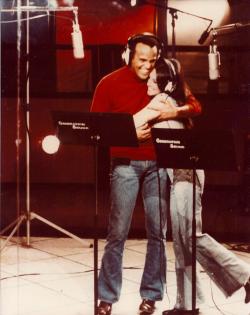
Courtesy Marlo Thomas.
The special was covered in nearly every Sunday newspaper TV insert in the country, thanks to a charm offensive launched by Thomas in January 1974. ABC flew critics to Los Angeles to meet Thomas in the backyard of her Beverly Hills home, where she served fresh-baked cookies under a tent in the pouring rain. “What we have given the network for a cut-rate price is a million-dollar special,” she proclaimed, still smarting from the battle. Later, though, she told a reporter from Cashbox that the special cost $2 million to produce, compared to the usual price of about $400,000.
In the end it was worth it. The special aired on March 11, 1974, in prime time and won its time period handily; 1.2 million households turned on the show, beating Magician on NBC and Gunsmoke on CBS. In May, the special won an Emmy, awarded to a beaming Hart and Thomas by “Mr. and Mrs. Mark Spitz.”
By June, the flood of publicity had boosted album sales to 250,000. The album went gold shortly afterward. And the songs just keep on selling: In 2010, spurred by a Target commercial, the title track was purchased for download 150,673 times. Revenues from the album, the book, the TV special, theatrical spinoffs, and 1988’s followup Free To Be … A Family have netted millions of dollars for the Free To Be Foundation, which supports programs challenging stereotypes, fighting discrimination, and encouraging individual well-being in children.
* * *
“One, two, three, eyes on me!”
“One, two, eyes on you.”
I am trying to get the attention of 12 elementary school students. “OK, we’ve given you pizza and ice cream because I really want to hear your opinions on some songs,” I say. Their parents chuckle grimly; these are Northern Virginia kids, not typically difficult to extract opinions from. Our next-door neighbor Dave brought over his old, careworn, Bell Records LP of Free To Be… You and Me; I hold it up for the crowd. “This is the album I want to play for you.”
“Whoa,” says Lyra, 7, who stores her music on an iPod Mini.
Thomas told me that she and Carole Hart played the Free To Be songs for a roomful of kids in 1972 just to make sure they’d go over with their target audience. Now I’m planning do the same in 2012. Will kids who’ve grown up in the age of girl power be able to relate to a record from the women’s lib era? Will kids who sing Katy Perry on the bus be willing to sit still for an album of ’70s folk rock? On its 40th anniversary, is Free To Be still the revolutionary object it once was?
I don’t actually own a turntable, so I just play a selection of Free To Be songs from our iPod speakers. The kids laugh heartily during “Boy Meets Girl.” When he hears the first gentle guitar notes of “When We Grow Up”, Henry, 7, immediately makes a face. “Is this classical music?” he asks.
After “Parents Are People” I ask the kids what their parents do. Everyone’s parents work: “My mom’s a teacher, and my dad’s a cop.” “Both my parents are lawyers.” “My dad’s trapped in a space about this big every day. My mom sings.”
Are there any jobs that only men can have? Cam, 9, raises his hand. “No women play in the NHL,” he points out. Zion, 10, suggests “Football player? Is that a real job?” OK, I say: Any jobs that aren’t being a pro athlete? “Nurse?” Lyra asks. “No, there are male nurses,” assures 11-year-old Katie. “I know,” says Lyra quickly.
Several of the boys openly scoff at “It’s All Right to Cry,” until I tell them that an NFL player sang it. “When he says, ‘I know some big boys who cry, too,’ who do you think he’s talking about?” I ask. The answers: “Him?” “His teammates?” “Santana Moss?”
“Raise your hand if your mom does most of the housework in your family,” I say. More than half the kids raise their hands, including my own. When I ask whose dads do more housework, two kids raise their hands. “It’s exactly even in our house,” declares Sydney, 8. “Does yard work count as housework?” asks Cooper, 6. “Yes,” declares his dad.
“William’s Doll” launches intense debate among the kids, as both boys and girls stake out positions on either side of the doll-wanting/not-doll-wanting divide. “Action figures count, Cooper!” declares Cooper’s brother, Cam. I declare that for our purposes they do not.
“I don’t like dolls, and I don’t care about them,” proclaims Sydney. “You have an American Girl doll!” her sister, Katie, reminds her. “Yeah, but I don’t play with her,” says Sydney. Katie scoffs: “You dressed her up like last week.”
Avery, 9, is mulling over why it is that boys don’t like dolls. “They think that since girls have dolls they don’t want someone to think they’re a girl.” Nine-year-old Elijah agrees. “Dolls are supposed to be dressed up pretty, so if you have one, you should be someone who likes to dress things up pretty.” “You don’t know any boys who liked to do that?” I ask him. “No,” he says. “Boys don’t like, like, pink and purple.”
“I like pink!” Cam says. Asked if anyone makes fun of him about that, he says, “Nope. All the other boys in my class like it, too.” Tell him about Adam, his parents urge. “Adam? Oh yeah! He’s on my hockey team. He has hot pink hockey tape. It’s awesome. You can always find him on the ice.”
“What’s the moral of these songs?” I ask as conversation winds down. Everyone agrees on some variation of “just be yourself,” the ur-moral of all children’s entertainment. No one, notably, says anything about gender, until the end, when Harper, 5, urgently raises her hand.
“Yes, Harper?”
“Girls go potty more than boys!”
“Thank you, Harper.”
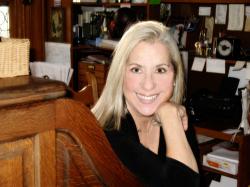
Courtesy Letty Cottin Pogrebin.
* * *
On nearly every front, American society is more gender-equal than it was 40 years ago. As a result, many of the songs in Free To Be had less impact on the kids in my living room they once did on me. My daughters and their friends cannot conceive of the possibility that any job is restricted to any one gender, or that mommies shouldn’t work, or that daddies were once exempt from housecleaning. But any parent raising kids in 2012 knows that it’s still not simple navigating a culture that seems intent on selling princess dresses to girls (even if the princesses who wear them are spunky, smart, and Brave) and superhero outfits to boys (even if the superheroes are—well, they’re pretty much still all muscly dudes).
The second-wave feminists I talk to acknowledge that there is still a ways to go. “Things are a lot better than they were,” says Justice Ruth Bader Ginsburg, a fan of the album since its release, “but we haven’t reached nirvana yet.” “Things aren’t as bad as they used to be,” agrees Gloria Steinem. “But if you go into FAO Schwarz, you still see that the toys are gender stereotyped.” Pogrebin, Steinem’s co-editor at Ms., is more stark: “You go into a toy store or a Kmart and you just want to throw up,” she tells me. “I do anyways. I feel like a complete failure when I go in there.” She recently went to buy curtain rods for her grandchildren; rods for boys had little footballs at the ends, and rods for girls had little bows.
Back at my house, Zoe’s dad, Ryan, said he had very firm ideas about the way he wanted to raise his girls. Most of those ideas came directly from his Free To Be childhood. “There was no way that, for example, a Barbie was gonna be in my house.” And then, he sighed, they had Zoe. “There was this progression,” he recalled as the parents debriefed while the kids watched a movie in my basement. “Firm ideas, yes. But then, certain things made her happy … so we relax said firm ideas … then we try to redirect while indulging the Disney princess phase.” (Turns out, this princess thing is not new. “God,” Pogrebin said during one of our interviews. “I used to have consciousness-raising groups with the most radical feminists on the planet in my living room, and upstairs hanging over the balcony would be my princesses in full regalia.”)
“My mother was all about gender-neutral,” said Cam and Cooper’s mom, Ashley. “She would not let my brothers have guns, so they would take twigs and turn them into guns. She would not let me have dolls, so I would take a towel and hold it like a baby. It’s just in there, man.”
Is it just in there? Is that why, despite the fact that so many of us pay some attention to parenting without regard to gender, our kids wind up in their gender-specific toy aisle? The nature vs. nurture debate is one that will surely never end. Even Thomas herself struggles with it, describing her frustrations with her husband, Phil Donahue, and her stepsons in her memoir, Growing Up Laughing:
“Where are my shoes?” Phil would constantly ask. What is it about men? They think we women have a radar attached to our uterus. And the thing that killed me was that I knew where they were. I knew where all four boys’ shoes were. How did this happen? Had my mother secretly planted a chip in me at birth that would activate when I said “I do?”
In her book Delusions of Gender, psychologist Cordelia Fine notes how early this all begins. In preschool, she says, children become “gender detectives,” because they are organized by gender and referred to by gender constantly. “Everything around the child,” Fine writes, “indicates that whether one is male or female is a matter of great importance.”
Does that mean there’s nothing we can do? Most parents, it seems, are engaged in a constant negotiation between encouraging their children to transcend gender and acceding to the cultural pressures that accompany it. In her book The Gender Trap, sociologist Emily W. Kane points out that many of the parents in her research study “creatively tweak and even revise” the gendered structures that society pushes on children, but she notes that this parental willingness to push back against gender norms is much stronger with daughters than with sons.
I see this every day. Girls are encouraged by parents and by organized initiatives to explore areas once considered the domain of boys: science and math, sports, leadership, business. But the converse isn’t always true; it’s much more unlikely that a boy will be encouraged to explore traits that are girlish: clothing and fashion, domestic work, nurturing and caregiving. Mothers worry about their daughters’ pink princess phase, while no one seems too concerned about their son’s toy chest full of cars and trucks.
Why is this? There is, of course, the entrenched cultural trope of a strong, heterosexual man taking care of a family and the discomfort that gender fluidity can raise in even the most loving parent of a boy. It’s no accident, writes Fine, that “unlike the term ‘tomboy’ there is nothing positive implied by its male counterpart, the ‘sissy.’ ” Danna’e, mom to Elijah and Zion, acknowledged that her religious beliefs and background as the daughter of Jamaican immigrants made her particularly nervous about her boys demonstrating “feminine” traits. “I don’t really feel homosexuality is any more of a sin than anything else,” she said with feeling. “But how do I have that conversation with my boys?”
“Boys still feel pressure to be a certain type,” Justice Ginsburg says. “Perhaps even more than girls.” This fact—that in many ways, girls can “cross over” more easily than boys—has quite a bit to do with the revolution of which Free To Be was a part. It’s not a coincidence that the girls who visited our house for the Free To Be listening party showed a broad range of interests, and that even the ones who were obsessed with “girly” dolls, clothes, and hair also were confident, eager to speak up on their own behalf, and interested in sports and science. American society may still be hostile to women in political rhetoric, in equal pay for equal work, and in many other subtle ways, but the girls of America—or at least of our relatively well-off part of America—still receive a near-constant litany of messages about female empowerment. Much of this—both the informal changes in our general expectations of girls, and the formal initiatives and legislation increasing their opportunities—are directly traceable to the women’s movement of the Ms. and Free To Be era.
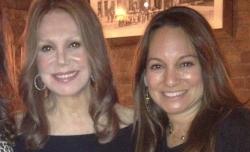
Courtesy Marlo Thomas.
Meanwhile, Free To Be seems, as my friend Dave said at our listening party, “like sensitivity training for boys.” But what else have we had? There’s been no equivalent organized political or social movement devoted to encouraging men to cross boundaries of gender expectations. We’ve worked it out ourselves, men of my generation, figuring out our set of beliefs and the ways we want to behave—at home, at work—based on our upbringings, our partnerships, and, yes, cultural artifacts like Free To Be that brought the feminist movement into our lives.
So could Free To Be happen today? And, if so, what injustice would it tackle, exactly? Guests at our party suggested gay rights, economic inequality, and body image. Marlo Thomas suggested bullying. Dave—Sydney and Katie’s dad—thinks that a Free To Be might be happening under our nose, just not in the form we expect. “That’s not the medium. No one’s gonna get together to make … an album? An album that people would buy?” Instead, he pointed out the It Gets Better videos as an example of a burgeoning genre of activist work, created by both celebrities and everyday people, that could in 40 years be remembered as fondly as Free To Be is by us today.
For her part, though, Gloria Steinem doesn’t think it’s time yet to go casting about for a new wrong to right. Steinem, who lately has been actively advocating for domestic workers and paid sick leave—both gender rights issues at their core—responded instantly when I asked her if the 21st century could use a new Free To Be. “I think so,” she said. “I think the greatest inhibitor is the myth that we don’t need it.”
And whatever happened to the little girl who started it all? Dionne Gordon Kirchner, Thomas’ niece, remembers the pride she felt when her mother gave her a copy of Free To Be and she saw her name on the back cover. “I loved ‘Atalanta,’ ” she says from her home in Los Angeles, where she’s a line producer for TV comedies. “I loved that she didn’t do what society said she had to do, what her parents said she had to do. Of course she reminded me of my aunt—she had my aunt’s voice and the long dark hair, and that’s what we all looked like in my family.”
“When Dionne had her first child,” Marlo says, “I just held my breath and thought, OK, so here we are. This is the moment in which it happens. But she said to me, ‘Don’t worry, Auntie Marlo. I’m free to be! I’m going to go back to work.’ ”

